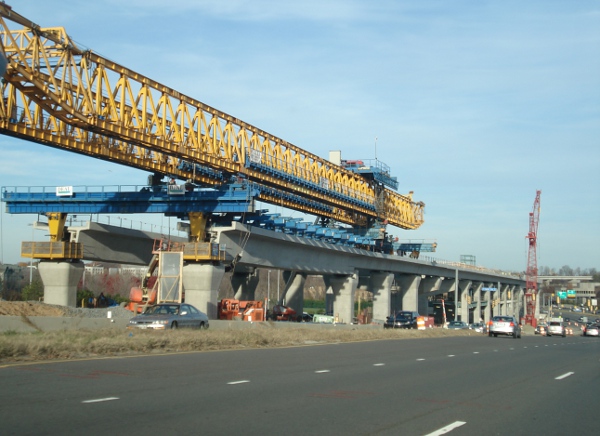With the approved funding of the Silver line Phase II nearly finalized and agreed upon by all of the coordinating jurisdictions the Dulles Corridor will likely accelerate the recession-proof growth it has experienced in the last 5 years. The regions surrounding each metro station will likely see variable levels of success, dependent on the specific demographics and dynamics of their locations, but the benefits to the greater region can not be discounted. While Phase I will alleviate a congestion constraint which has crippled the growth opportunities of Fairfax County, Phase II will help grow the County into an economic dynamo capable of attracting additional corporations, investments, and developers.
Connection of the nations 20th (Dulles) and the nations 26th(Reagan) largest airports with a modern rail system alone could spur further growth in the airports

and commercial viability of the region and would have been financially wise for the region on its own merit. Including the additional benefit of connecting the fasting growing commercial office spaces in the metropolitan area, previously unreachable by light and heavy rail, in Reston and Tysons Corner as well as providing commuters additional transportation options within a road system which has ranked last in the country for the past 2 years has provided Fairfax the opportunity to create a new paradigm in the interwoven cultural mesh between suburbia and commercial centers.
Regardless of the stance many critics have on the idea of smart growth and the function of municipalities in the design and planning of developments, the Dulles Metrorail project creates a new capability for industries to attain quick access to the economic engine within the District while generating new opportunities for the vibrant Biotech, Financial, Engineering, and Management industries to cross pollinate their service and client base. In the Great Reset, Richard Florida asserts a regions metabolism, based on the growth of a region in relation to its economic diversity, provides an indication of the regions buffering ability during downturns. “The critical strength of fast-metabolizing cities is that they can overcome business failures more easily, by reabsorbing their talented workers and growing new businesses.” In this way the interconnection of multiple fields, the magnetism of a region which can attract a dynamic skilled workforce, and the size of the regions gross economic exchange can enforce this resilience.
The completion of the Silver line Phase I will likely be congruent to the inflection point of the current recession in 2013 which could act to propel the benefits of the new system but it is the final connection of the outer suburbs through Phase II which will promote sustainability of the network. On average 86,000 commuters access I-66 before Vienna (west of Vienna) daily compared to 34,000 beyond Vienna (east of Vienna). Based on the 2009 metro-rail ridership at the West Falls Church and Vienna station, approximately 30,000 of these trip reductions can likely be attributed to WMATA. In comparison 135,000 commuters access the Dulles Toll road beyond Wielhe Avenue daily(towards the city). Revised for clarification.
- The average travel time on the toll road from Rt28 onto Northbound 495 during morning rush hour averages typically 45 minutes for 15 miles of travel, a sluggish 20 mph per hour. Considering many of these commuters have the District as their eventual destination (90 minutes typically) it would be foolish to believe that an equivalent number, if not more riders, should be expected from the Wielhe Avenue station to Phase II future stations during rush hour in comparison to the Vienna Station. Revised for clarification.
- Considering the lack of density around the Vienna Station in comparison with the much denser, and intermodal Reston (pop. 56,000) and Herndon (22,000) within 2 miles of the Phase II metro stations by using the Vienna ridership again would be deemed conservative.
- These outer stations will draw off users of the Vienna station who currently must use I-66 to reach the station, providing greater capabilities to these riders to access stations via mass transit and shorter vehicle trips. Revised for clarification.
These being the likely factors on ridership to the Silver line it could be asserted that an anticipated reduction of 25,000 commuters from both I-66 and the toll road could be expected leaving these over-congested routes more sustainable while providing a quick commute option to those accessing the District.
While many have discounted the relief that can be estimated from these new projects it is clear that Northern Virginia commuters have utilized intermodal options when available and this trend is likely to continue if not grow. The inclusion of a larger rider base for WMATA will also assist in sustaining the network as a whole and serve as a tool of the new region that can emerge to attract economic growth and a dynamic population.

